7 Books by John Steinbeck
Requirements: ePUB reader, 2.3 MB
Overview: John Steinbeck III was an American writer. He wrote the Pulitzer Prize-winning novel The Grapes of Wrath, published in 1939 and the novella Of Mice and Men, published in 1937. In all, he wrote twenty-five books, including sixteen novels, six non-fiction books and several collections of short stories. In 1962 Steinbeck received the Nobel Prize for Literature. Most of his earlier work dealt with subjects familiar to him from his formative years. An exception was his first novel Cup of Gold which concerns the pirate Henry Morgan, whose adventures had captured Steinbeck's imagination as a child. In his subsequent novels, Steinbeck found a more authentic voice by drawing upon direct memories of his life in California. Later he used real historical conditions and events in the first half of 20th century America, which he had experienced first-hand as a reporter. Steinbeck often populated his stories with struggling characters; his works examined the lives of the working class and migrant workers during the Dust Bowl and the Great Depression. His later body of work reflected his wide range of interests, including marine biology, politics, religion, history, and mythology.
One of his last published works was Travels with Charley, a travelogue of a road trip he took in 1960 to rediscover America. He died in 1968 in New York of a heart attack and his ashes are interred in Salinas.
Genre: Historical Fiction / Classics
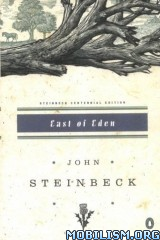
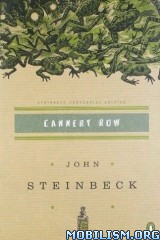
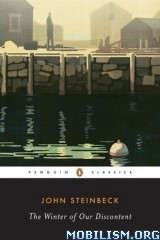
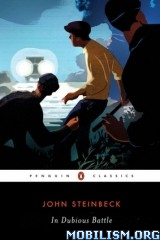
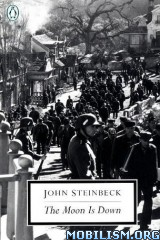
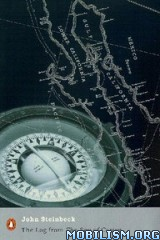
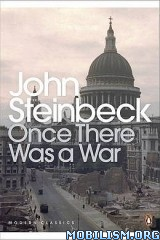
East of Eden
Set in the rich farmland of California’s Salinas Valley, this sprawling and often brutal novel follows the intertwined destinies of two families—the Trasks and the Hamiltons—whose generations helplessly reenact the fall of Adam and Eve and the poisonous rivalry of Cain and Abel. Here Steinbeck created some of his most memorable characters and explored his most enduring themes: the mystery of identity; the inexplicability of love; and the murderous consequences of love’s absence.
Cannery Row
Cannery Row is a book without much of a plot. Rather, it is an attempt to capture the feeling and people of a place, the cannery district of Monterey, California, which is populated by a mix of those down on their luck and those who choose for other reasons not to live "up the hill" in the more respectable area of town. The flow of the main plot is frequently interrupted by short vignettes that introduce us to various denizens of the Row, most of whom are not directly connected with the central story. These vignettes are often characterized by direct or indirect reference to extreme violence: suicides, corpses, and the cruelty of the natural world. The "story" of Cannery Row follows the adventures of Mack and the boys, a group of unemployed yet resourceful men who inhabit a converted fish-meal shack on the edge of a vacant lot down on the Row. Sweet Thursday is the sequel to Cannery Row.
The Winter of Our Discontent
Ethan Allen Hawley, the protagonist of Steinbeck’s last novel, works as a clerk in a grocery store that his family once owned. With Ethan no longer a member of Long Island’s aristocratic class, his wife is restless, and his teenage children are hungry for the tantalizing material comforts he cannot provide. Then one day, in a moment of moral crisis, Ethan decides to take a holiday from his own scrupulous standards. Set in Steinbeck’s contemporary 1960 America, the novel explores the tenuous line between private and public honesty that today ranks it alongside his most acclaimed works of penetrating insight into the American condition.
In Dubious Battle
This 1936 novel—set in the California apple country—portrays a strike by migrant workers that metamorphoses from principled defiance into blind fanaticism.
The Moon Is Down
Taken by surprise, a small coastal town is overrun by an invading army with little resistance. The town is important because it is a port that serves a large coal mine. Colonel Lanser, the head of the invading battalion, along with his staff establishes his HQ in the house of the democratically elected and popular Mayor Orden. As the reality of occupation sinks in and the weather turns bleak, with the snows beginning earlier than usual, the "simple, peaceful people" of the town are angry and confused. Colonel Lanser, a veteran of many wars, tries to operate under a veil of civility and law, but in his heart he knows that "there are no peaceful people" amongst those whose freedom has been taken away by force. The veil is soon torn apart when Alexander Morden, an erstwhile alderman and "a free man," is ordered to work in the mine. He strikes out at Captain Loft with a pick axe, but Captain Bentick steps into its path and dies of it. After a summary trial, Morden is executed by a firing squad. This incident catalyzes the people of the town and they settle into "a slow, silent, waiting revenge."
The Log from the Sea of Cortez
In 1940 John Steinbeck sailed in a sardine boat with his friend the biologist Edward F. Ricketts to collect marine invertebrates from the beaches of the gulf of California. The day-to-day story of the trip is given in the log which combines science, philosophy and high-spirited adventure.
Once There Was a War
In 1943 John Steinbeck was on assignment for *The New York Herald Tribune*, writing from Italy and North Africa, and from England in the midst of the London blitz. In his dispatches he focuses on the human-scale effect of the war, portraying everyone from the guys in a bomber crew to Bob Hope on his USO tour and even fighting alongside soldiers behind enemy lines. Taken together, these writings create an indelible portrait of life in wartime.
Download Instructions:
https://rapidgator.net/file/3fadcb6b8eaeecf2da8655b048c5f0a5/josenelson.rar.html
Last edit on July 11, 2023
Requirements: ePUB reader, 2.3 MB
Overview: John Steinbeck III was an American writer. He wrote the Pulitzer Prize-winning novel The Grapes of Wrath, published in 1939 and the novella Of Mice and Men, published in 1937. In all, he wrote twenty-five books, including sixteen novels, six non-fiction books and several collections of short stories. In 1962 Steinbeck received the Nobel Prize for Literature. Most of his earlier work dealt with subjects familiar to him from his formative years. An exception was his first novel Cup of Gold which concerns the pirate Henry Morgan, whose adventures had captured Steinbeck's imagination as a child. In his subsequent novels, Steinbeck found a more authentic voice by drawing upon direct memories of his life in California. Later he used real historical conditions and events in the first half of 20th century America, which he had experienced first-hand as a reporter. Steinbeck often populated his stories with struggling characters; his works examined the lives of the working class and migrant workers during the Dust Bowl and the Great Depression. His later body of work reflected his wide range of interests, including marine biology, politics, religion, history, and mythology.
One of his last published works was Travels with Charley, a travelogue of a road trip he took in 1960 to rediscover America. He died in 1968 in New York of a heart attack and his ashes are interred in Salinas.
Genre: Historical Fiction / Classics







East of Eden
Set in the rich farmland of California’s Salinas Valley, this sprawling and often brutal novel follows the intertwined destinies of two families—the Trasks and the Hamiltons—whose generations helplessly reenact the fall of Adam and Eve and the poisonous rivalry of Cain and Abel. Here Steinbeck created some of his most memorable characters and explored his most enduring themes: the mystery of identity; the inexplicability of love; and the murderous consequences of love’s absence.
Cannery Row
Cannery Row is a book without much of a plot. Rather, it is an attempt to capture the feeling and people of a place, the cannery district of Monterey, California, which is populated by a mix of those down on their luck and those who choose for other reasons not to live "up the hill" in the more respectable area of town. The flow of the main plot is frequently interrupted by short vignettes that introduce us to various denizens of the Row, most of whom are not directly connected with the central story. These vignettes are often characterized by direct or indirect reference to extreme violence: suicides, corpses, and the cruelty of the natural world. The "story" of Cannery Row follows the adventures of Mack and the boys, a group of unemployed yet resourceful men who inhabit a converted fish-meal shack on the edge of a vacant lot down on the Row. Sweet Thursday is the sequel to Cannery Row.
The Winter of Our Discontent
Ethan Allen Hawley, the protagonist of Steinbeck’s last novel, works as a clerk in a grocery store that his family once owned. With Ethan no longer a member of Long Island’s aristocratic class, his wife is restless, and his teenage children are hungry for the tantalizing material comforts he cannot provide. Then one day, in a moment of moral crisis, Ethan decides to take a holiday from his own scrupulous standards. Set in Steinbeck’s contemporary 1960 America, the novel explores the tenuous line between private and public honesty that today ranks it alongside his most acclaimed works of penetrating insight into the American condition.
In Dubious Battle
This 1936 novel—set in the California apple country—portrays a strike by migrant workers that metamorphoses from principled defiance into blind fanaticism.
The Moon Is Down
Taken by surprise, a small coastal town is overrun by an invading army with little resistance. The town is important because it is a port that serves a large coal mine. Colonel Lanser, the head of the invading battalion, along with his staff establishes his HQ in the house of the democratically elected and popular Mayor Orden. As the reality of occupation sinks in and the weather turns bleak, with the snows beginning earlier than usual, the "simple, peaceful people" of the town are angry and confused. Colonel Lanser, a veteran of many wars, tries to operate under a veil of civility and law, but in his heart he knows that "there are no peaceful people" amongst those whose freedom has been taken away by force. The veil is soon torn apart when Alexander Morden, an erstwhile alderman and "a free man," is ordered to work in the mine. He strikes out at Captain Loft with a pick axe, but Captain Bentick steps into its path and dies of it. After a summary trial, Morden is executed by a firing squad. This incident catalyzes the people of the town and they settle into "a slow, silent, waiting revenge."
The Log from the Sea of Cortez
In 1940 John Steinbeck sailed in a sardine boat with his friend the biologist Edward F. Ricketts to collect marine invertebrates from the beaches of the gulf of California. The day-to-day story of the trip is given in the log which combines science, philosophy and high-spirited adventure.
Once There Was a War
In 1943 John Steinbeck was on assignment for *The New York Herald Tribune*, writing from Italy and North Africa, and from England in the midst of the London blitz. In his dispatches he focuses on the human-scale effect of the war, portraying everyone from the guys in a bomber crew to Bob Hope on his USO tour and even fighting alongside soldiers behind enemy lines. Taken together, these writings create an indelible portrait of life in wartime.
Download Instructions:
https://rapidgator.net/file/3fadcb6b8eaeecf2da8655b048c5f0a5/josenelson.rar.html
Last edit on July 11, 2023